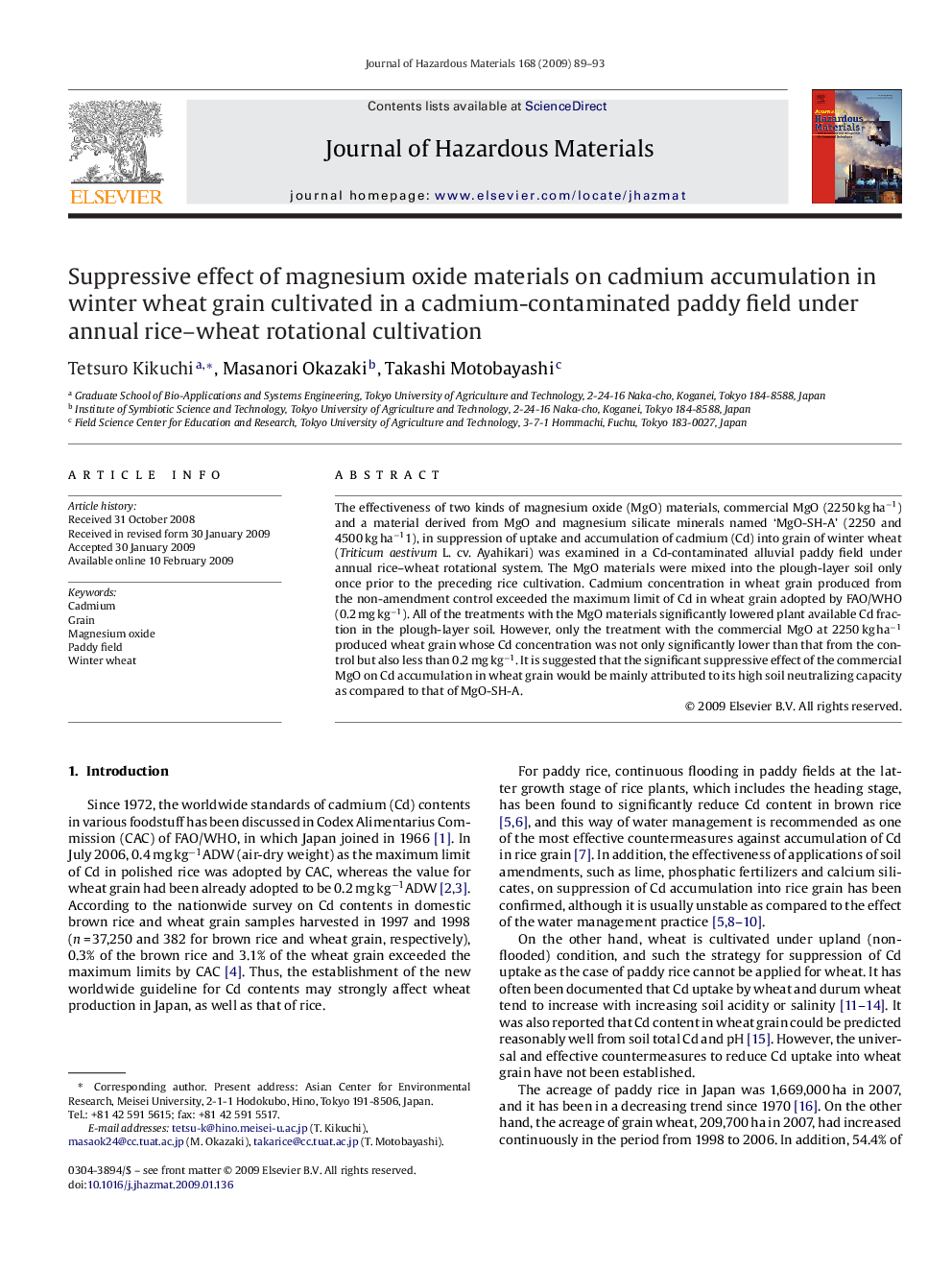| کد مقاله | کد نشریه | سال انتشار | مقاله انگلیسی | نسخه تمام متن |
|---|---|---|---|---|
| 581312 | 877842 | 2009 | 5 صفحه PDF | دانلود رایگان |

The effectiveness of two kinds of magnesium oxide (MgO) materials, commercial MgO (2250 kg ha−1) and a material derived from MgO and magnesium silicate minerals named ‘MgO-SH-A’ (2250 and 4500 kg ha−11), in suppression of uptake and accumulation of cadmium (Cd) into grain of winter wheat (Triticum aestivum L. cv. Ayahikari) was examined in a Cd-contaminated alluvial paddy field under annual rice–wheat rotational system. The MgO materials were mixed into the plough-layer soil only once prior to the preceding rice cultivation. Cadmium concentration in wheat grain produced from the non-amendment control exceeded the maximum limit of Cd in wheat grain adopted by FAO/WHO (0.2 mg kg−1). All of the treatments with the MgO materials significantly lowered plant available Cd fraction in the plough-layer soil. However, only the treatment with the commercial MgO at 2250 kg ha−1 produced wheat grain whose Cd concentration was not only significantly lower than that from the control but also less than 0.2 mg kg−1. It is suggested that the significant suppressive effect of the commercial MgO on Cd accumulation in wheat grain would be mainly attributed to its high soil neutralizing capacity as compared to that of MgO-SH-A.
Journal: Journal of Hazardous Materials - Volume 168, Issue 1, 30 August 2009, Pages 89–93